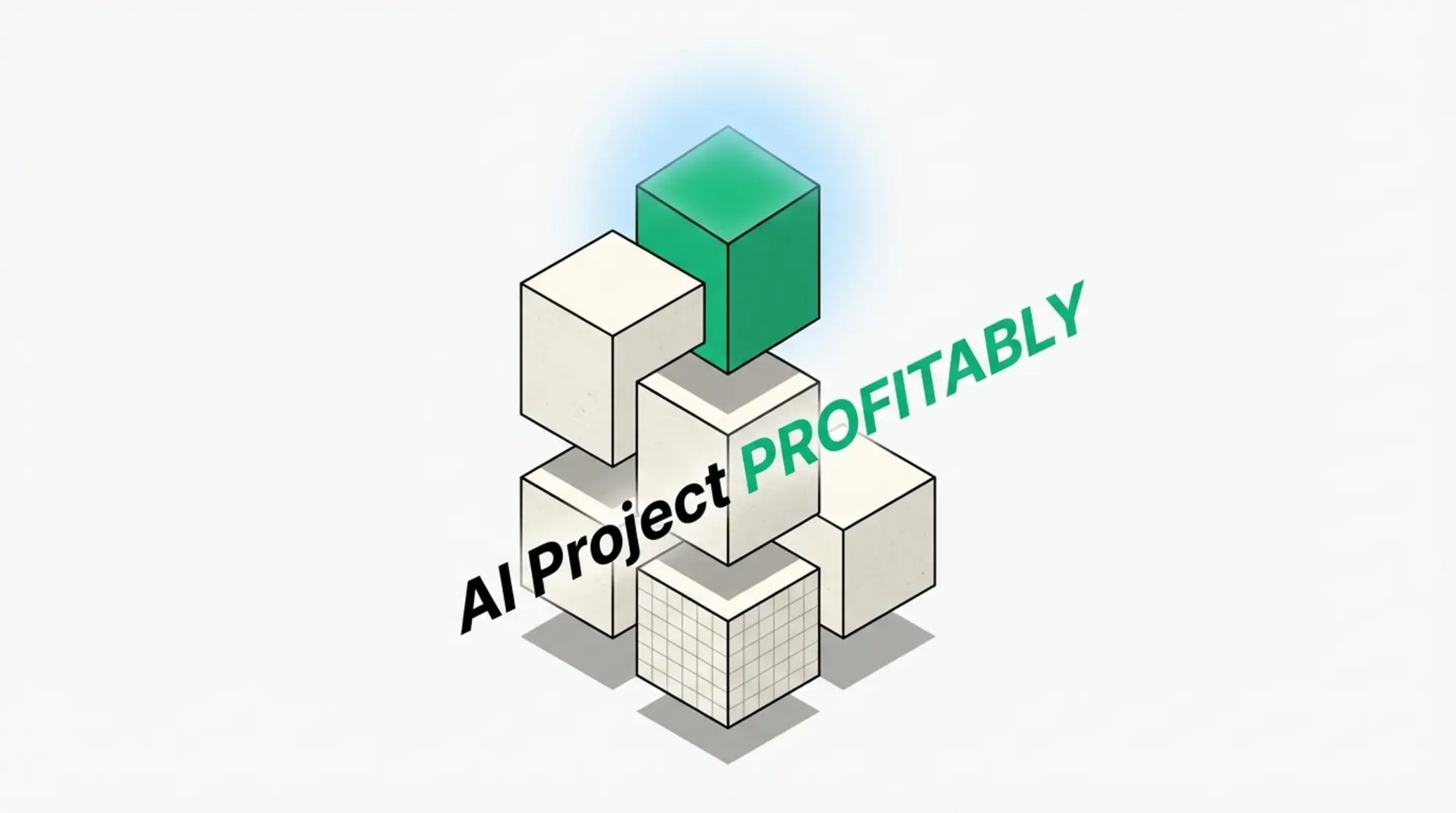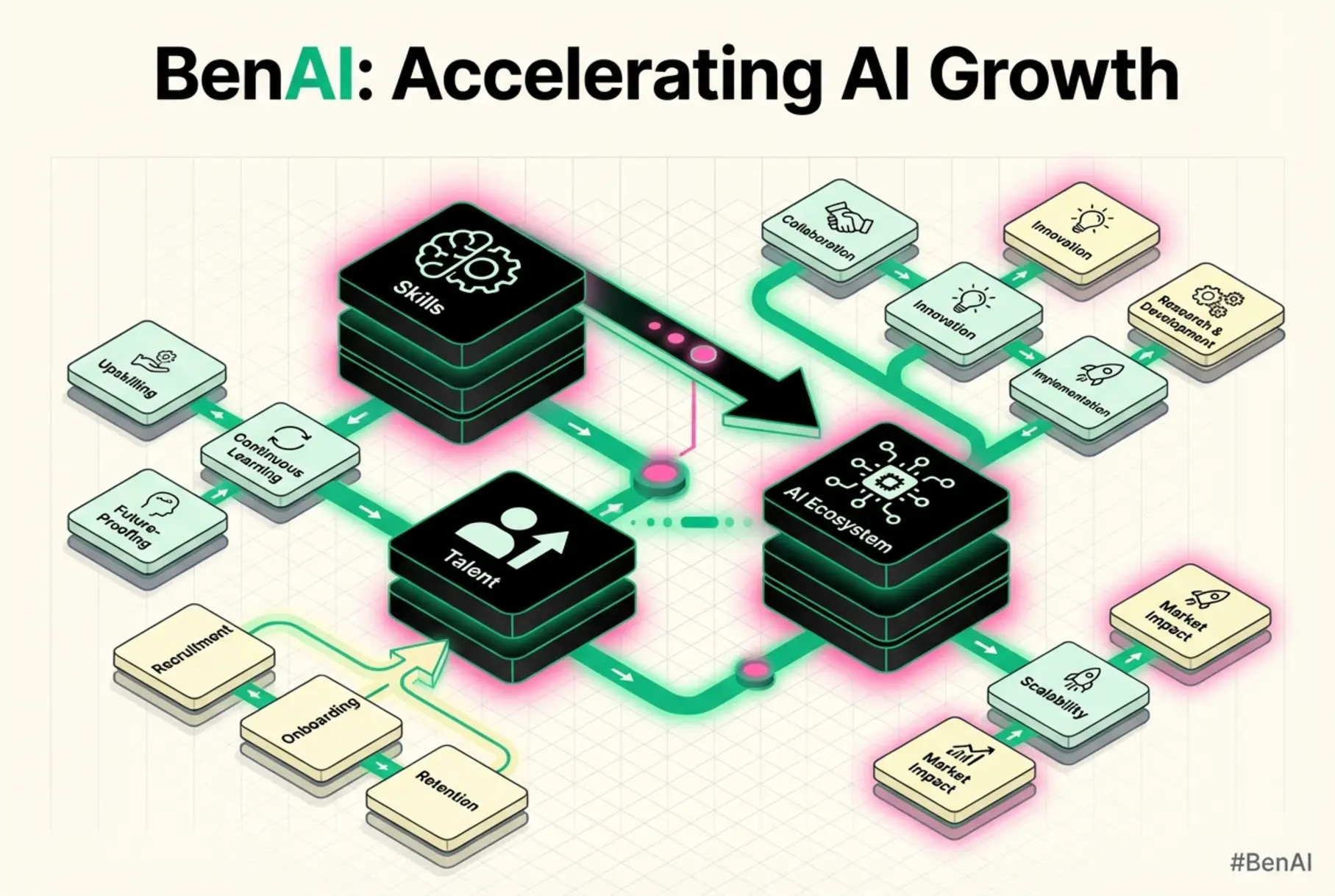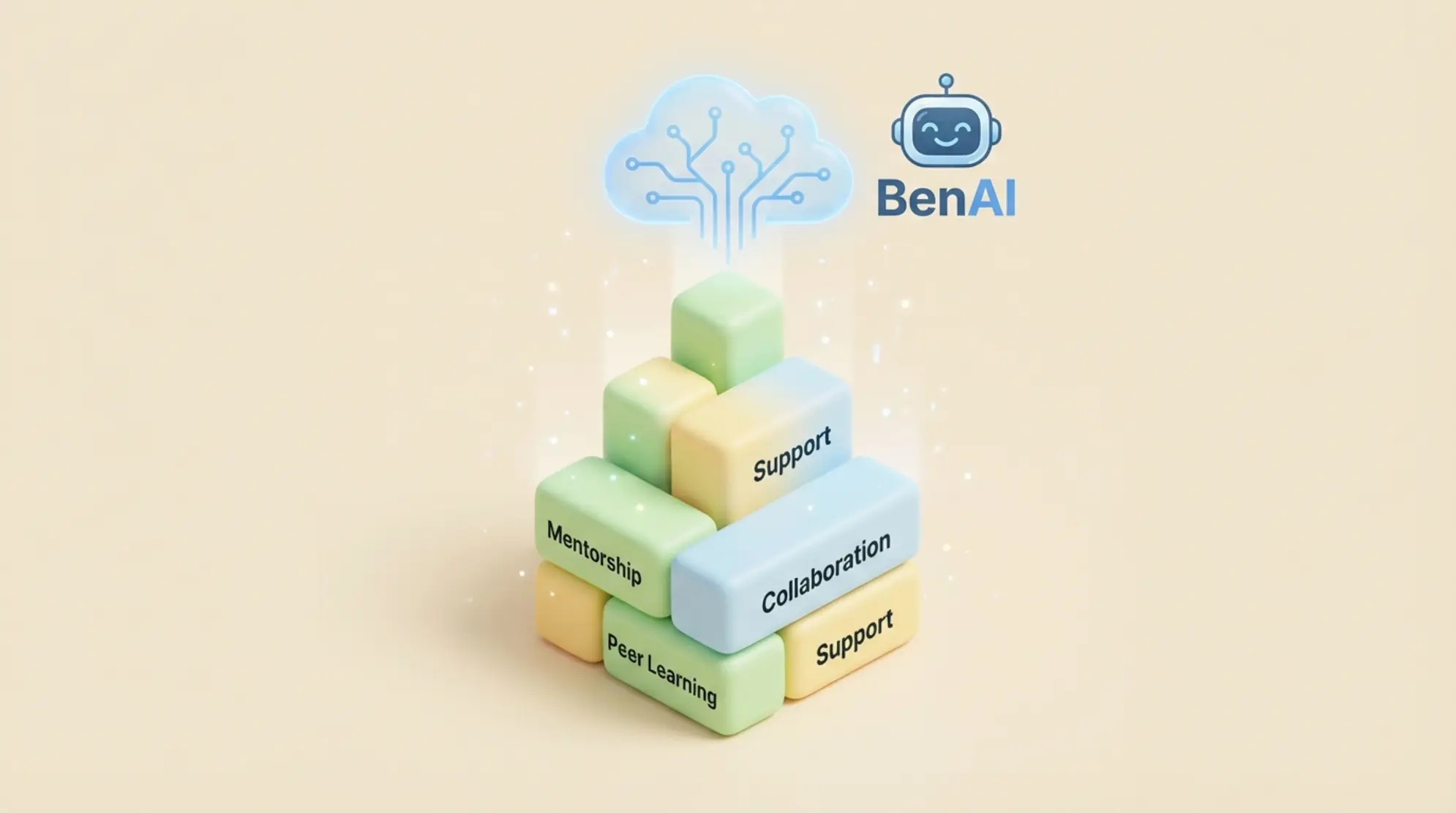You’ve seen the memos. You've sat through the presentations. The directive from the top is clear: "We need to use AI." But a mandate alone doesn't create innovation. It often creates confusion, resistance, and a portfolio of disconnected, underutilized tools.
The truth is, your company’s greatest AI opportunities won’t be discovered in the boardroom. They’re hidden in plain sight, embedded in the daily workflows of your sales reps, marketers, and operations teams. The real challenge isn’t buying more AI; it’s creating a culture where your people feel empowered to find, test, and scale AI solutions themselves.
This isn't just a "nice to have." With 83% of organizations calling AI a top business priority, fostering a culture of internal experimentation has become a critical competitive advantage. The question is no longer if you should unleash your team's innovative potential, but how you can build a framework that turns curiosity into measurable impact.
Why Top-Down AI Mandates Fail (and What to Do Instead)
Top-down AI strategies often look great on a slide deck but crumble on contact with reality. They fail because they are inherently slow and disconnected from the ground truth of the business. A central committee simply can't see the niche, high-impact opportunities that a customer support agent or a content strategist spots every single day.
When innovation is dictated, not discovered, you get:
- Disengaged Employees: People are told what to use, not asked what they need. This stifles creativity and creates a culture of compliance rather than one of enthusiastic adoption.
- Missed Opportunities: The most valuable AI applications often solve small, persistent problems. A top-down approach is too blunt an instrument to find these gems.
- Wasted Investment: Without grassroots buy-in, expensive AI tools become shelfware, failing to deliver on their promised ROI and creating skepticism for future initiatives.
The alternative is a bottom-up approach. By creating structured, safe environments for experimentation, you empower the people closest to the problems to build the solutions. This is the foundation of a true cultivating an AI-first mindset and the fastest path to meaningful AI integration.
The ROI of a Culture of Experimentation
Investing in a culture of experimentation isn't an act of faith; it's a strategic business decision with a clear return. While your competitors are stuck in pilot programs, you can be deploying dozens of employee-vetted AI tools that drive real-world efficiency and growth.
The data paints a clear picture. Companies are already using AI in an average of three different business functions, and with private investment in generative AI hitting $33.9 billion in 2024, the pace is only accelerating. Fostering internal innovation allows you to tap into this momentum directly, turning your workforce into an engine for discovery.
The ROI manifests in several ways:
- Accelerated Efficiency: Teams find and implement AI tools to automate repetitive tasks, freeing up hundreds of hours for strategic work.
- Increased Agility: You can test and validate new ideas in weeks, not quarters, allowing you to adapt to market changes faster than competitors.
- Talent Attraction & Retention: Top performers want to work at innovative companies. A vibrant culture of experimentation makes you a magnet for the 97 million people working in the global AI sector.
- New Revenue Streams: Employee-led experiments can uncover entirely new product ideas or service optimizations that drive top-line growth.
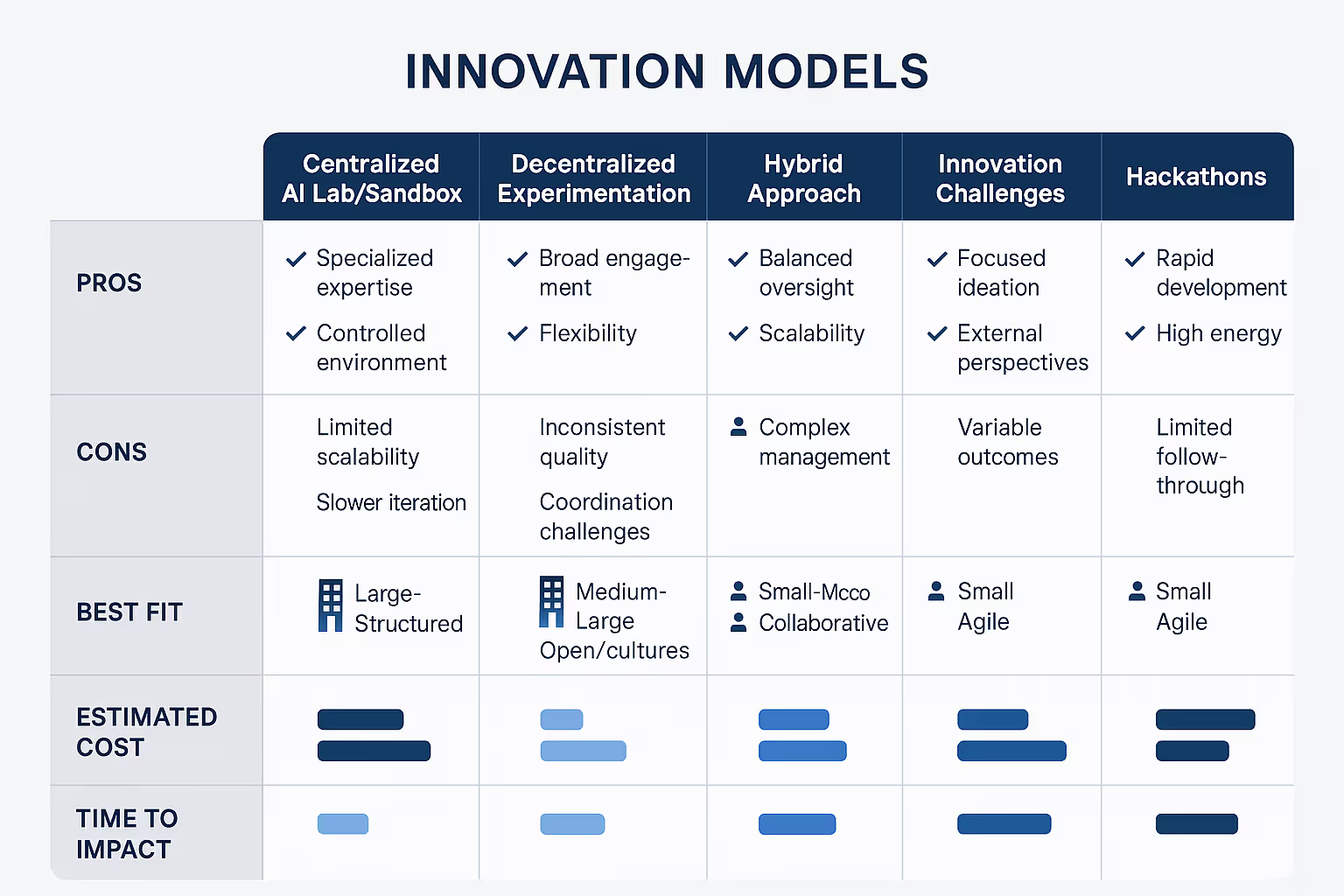
Choosing Your Innovation Model: A Comparative Framework
There's no single "right" way to foster AI innovation. The best approach depends on your company's size, culture, and technical maturity. The key is to choose a model that provides the right balance of freedom and structure for your team.
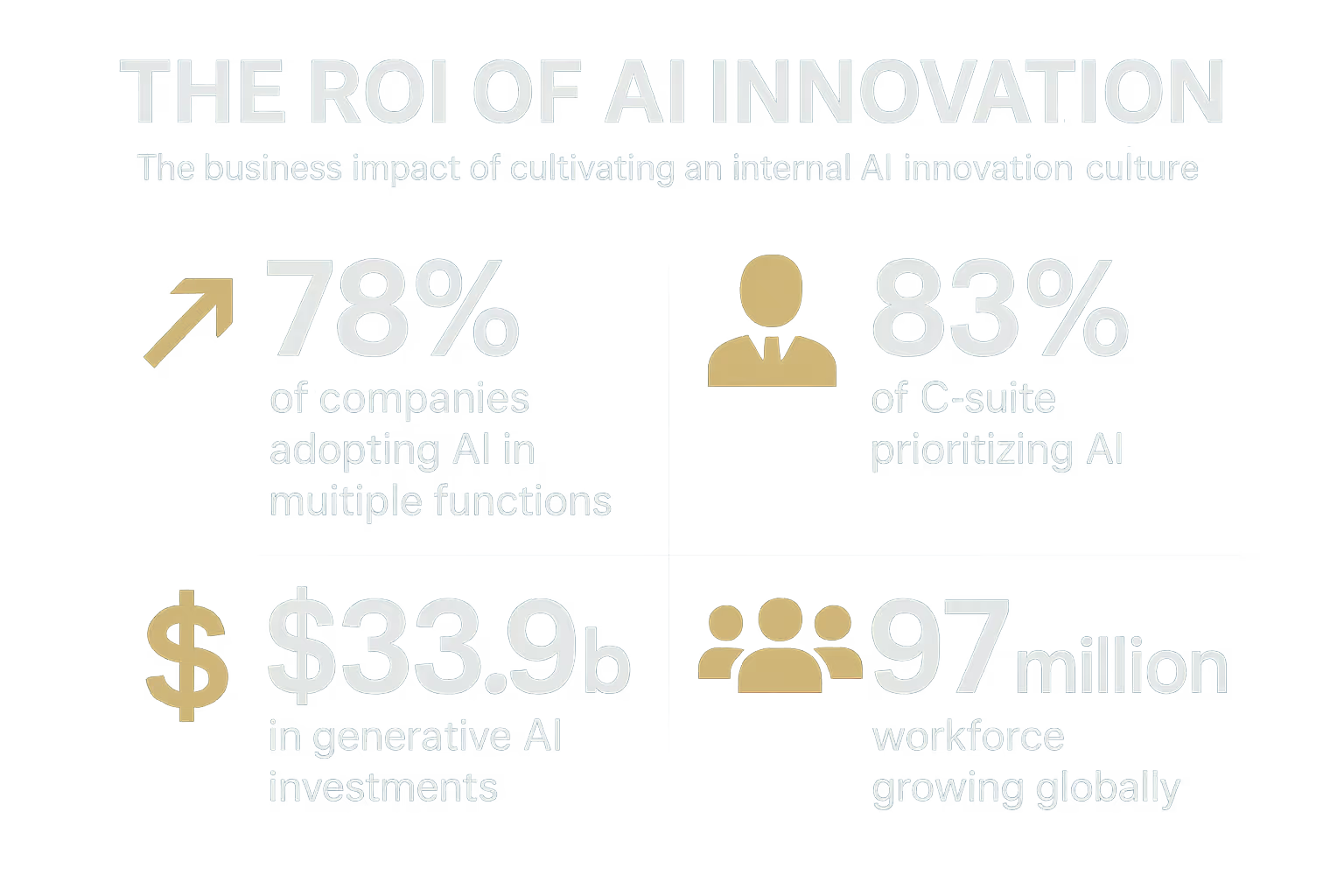
Here’s a breakdown of the most common models to help you decide:
How to Build Your AI Sandbox: A 5-Step Guide
Whether you choose a centralized lab or a hybrid model, creating a "sandbox"—a safe and controlled environment for experimentation—is essential. This is where your team can test new AI tools without risking production data or systems.
Building one doesn't have to be a multi-year IT project. You can start small and scale.
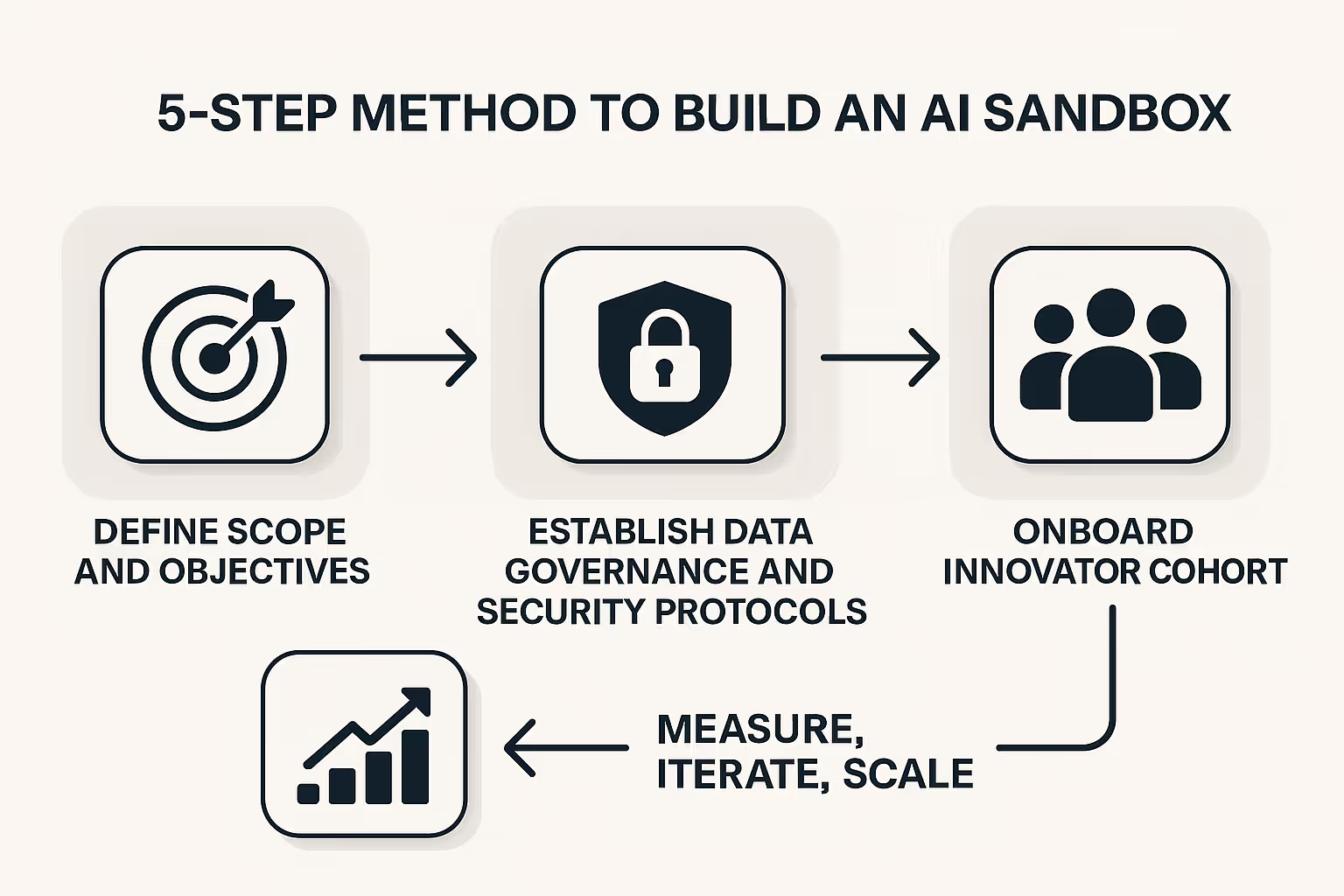
Here’s a practical roadmap:
- Define the Scope and Objectives: What's the goal? Are you trying to automate marketing outreach, optimize sales follow-ups, or streamline content creation? Start with a clear business problem.
- Build the Tech Stack: This doesn't need to be complex. It can start with access to key APIs, a cloud computing environment, and a curated list of approved AI applications. The goal is to provide tools, not build everything from scratch.
- Establish Data Governance and Security Protocols: This is non-negotiable. Work with IT to create a set of anonymized or synthetic data for testing. Define clear rules for data handling, privacy, and security to manage risk effectively.
- Onboard Your First Cohort of Innovators: Start with a small, enthusiastic group of volunteers. Provide them with training, clear guidelines, and a direct line of communication for support. Their success will become the blueprint for everyone else.
- Measure, Iterate, and Scale: Define what success looks like from the start. Is it hours saved? Leads generated? Track these metrics, celebrate wins, and use the lessons learned to gradually expand access to the sandbox.
Beyond the Sandbox: Fostering a Sustained Culture of Innovation
A sandbox is a great start, but true cultural change requires a more holistic approach. The goal is to make innovation a daily habit, not a special event.
- Create a Simple Idea Pipeline: Establish a straightforward process for employees to submit AI ideas. It could be a simple form, a dedicated Slack channel, or a monthly pitch session. The key is to make it visible, accessible, and to ensure every idea gets a response.
- Celebrate and Reward Innovators: Publicly recognize employees who run successful experiments. This could be through company-wide announcements, small bonuses, or extra vacation days. When people see that experimentation is valued, they are more likely to participate.
- Provide Ongoing Learning Resources: The AI landscape changes fast. Give your team the resources they need to stay current. This could involve curated newsletters, lunch-and-learns, or access to an AI Business Community where they can connect with peers and experts.
Case Studies in Internal AI Innovation
Theory is good, but results are better. Here’s how this approach plays out in the real world:
- The SaaS Sales Team: A sales team, frustrated with manual lead qualification, used their company's sandbox to test three different AI lead-scoring tools. They found one that integrated with their CRM and improved lead-to-opportunity conversion by 18% in one quarter. The experiment cost less than $1,000 and is now being rolled out globally.
- The E-commerce Marketing Department: A marketing team ran an internal hackathon to find ways to reduce customer service inquiries. The winning idea used a generative AI tool to create hyper-detailed product descriptions and FAQs. After implementation, "Where is my order?" tickets dropped by 40%, freeing up the support team for more complex issues.
- The Operations Group: An operations manager used a no-code AI platform to build a custom tool that automated the process of reconciling invoices. The tool saved her team 20 hours per week, paid for itself within two months, and eliminated costly human errors.
These wins weren't the result of a multi-million dollar consulting project. They came from empowering an employee to solve a problem they knew intimately.
Frequently Asked Questions
Navigating this new territory brings up valid questions. Here are straightforward answers to the most common concerns.
How do we manage the security and data privacy risks of widespread experimentation?
This is the most critical question, and the answer is a well-designed sandbox. By providing a controlled environment with anonymized data and pre-vetted tools, you give your team the freedom to experiment without putting sensitive company or customer information at risk. Clear governance is the foundation of safe innovation.
What's the real ROI on something so experimental? How do we measure it?
Measure what matters. For each experiment, define a key metric before it begins. This could be "hours saved per week," "increase in lead quality score," "reduction in support tickets," or "improvement in content production speed." The ROI isn't in any single experiment but in the aggregate impact of dozens of small, successful improvements over time.
We're not a giant tech company. Can we really do this?
Absolutely. In fact, agile, high-growth companies are often better positioned to do this than large enterprises. You can move faster and adapt more quickly. You don't need a massive internal data science team. You can start with off-the-shelf AI tools and focus on application, not invention. Partnering with experts who provide custom AI solutions can also bridge any internal skills gap.
How do we get started if we have a limited budget?
Start with the lowest-cost, highest-engagement activities. A one-day hackathon or a decentralized experimentation model requires minimal upfront investment. Empower a few teams with a small budget ($500-$1,000) to test tools that solve a specific pain point. The early wins from this small investment will build the business case for a larger program.
Your Next Step: From Idea to Implementation
Building a culture of AI innovation is the single most effective way to accelerate your journey to becoming an AI-first organization. It transforms AI from a buzzword into a practical, powerful tool that is woven into the fabric of your company.
But you don’t have to build this framework alone. Moving from a theoretical model to a functioning innovation engine requires a blend of strategy, technology, and cultural leadership.
If you’re ready to stop mandating and start empowering, let's talk. We can help you design and implement the right innovation model for your organization—from setting up a secure AI sandbox to providing the resources your team needs to succeed.
Explore our custom AI automation solutions to see how we can help you build the systems that unleash your team's true potential.
Join Our Growing AI Business Community
Get access to our AI Automations templates, 1:1 Tech support, 1:1 Solution Engineers, Step-by-step breakdowns and a community of forward-thinking business owners.
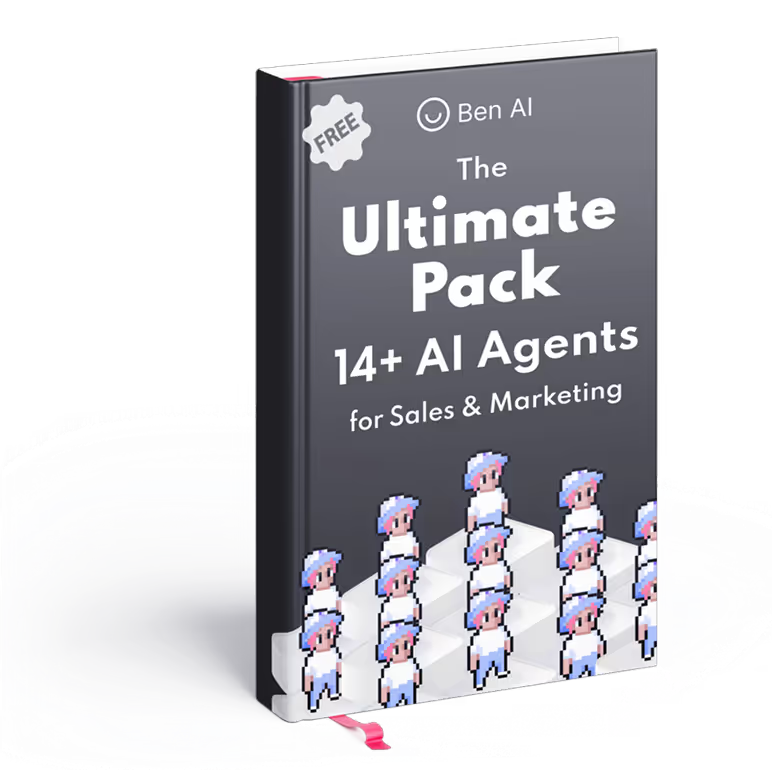
Latest Blogs
Explore our latest blog posts and insights.


